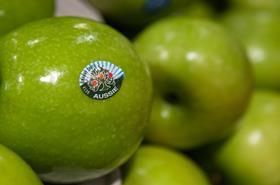
You’ve recently joined Apple & Pear Australia Ltd (APAL); could you give me an overview of your role?
CF: My role is Market Development Manager, and this covers both domestic and export. I will work with industry to bring awareness to where marketing dollars are being invested such as the Aussie Apple sticker initiative and to develop export.
Is this a new role that’s just been created? What does that signify about APAL’s focus on exports?
CF: Yes, APAL created the role in light of imports coming in from China, then New Zealand, and US apples are knocking on the door as well. With the potential for our domestic market to become highly competitive, we see a need to focus on developing export opportunities.
It’s a big change for the Australian apple industry. The numbers indicate we export less than 1.4 per cent of our apple crop (3,800 tonnes exported) and 4.4 per cent of our pear crop (5,700 tonnes exported), so export has excellent growth potential.
Where do you see opportunities for Australian apples on the international stage?
CF: We need access for Australian apples and pears into China and a number of other north Asian countries.
It’s a little bit difficult with our dollar, and you have to place exports in the right window. Each market needs to be thoroughly analysed.
The Victorian Department of Primary Industries (DPI) is working on a project which is going to investigate Asian markets and assist in identifying our key markets.
Does Australia need to focus on premium offerings and varieties like Pink Lady?
CF: Most other apple varieties are traded as commodities, so Pink Lady is something we can take a strategic approach to, and figure out our niche. When we start any kind of trade, the leader will be Pink Lady, and if that country wants other varieties we can look at them too. APAL owns the Pink Lady brand, so we can manage the promotion of that, but we’d have to work internationally with other suppliers.



